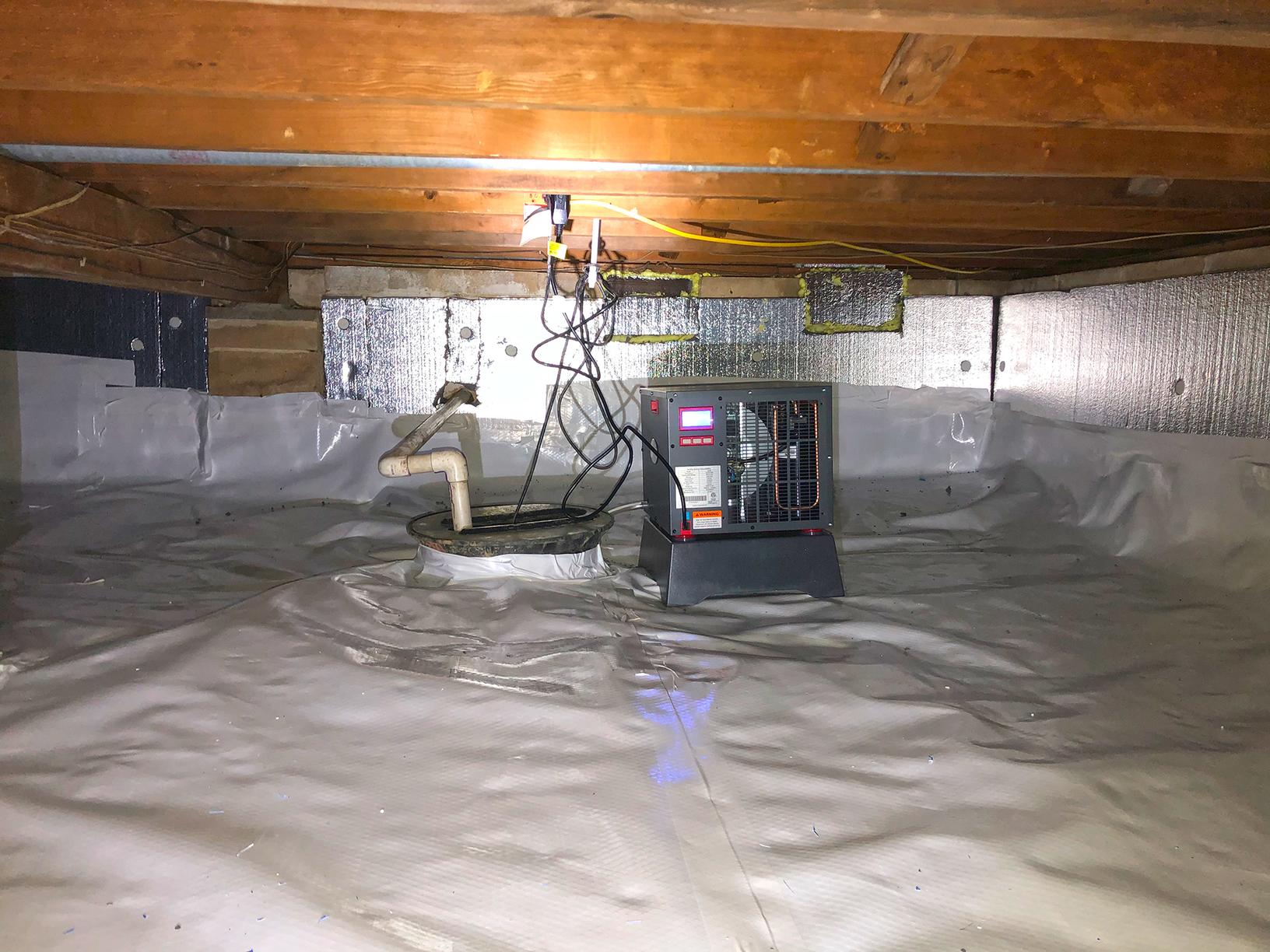Table Of Content

During your annual HVAC system maintenance visit, your technician will likely use specialized test instruments. Still, you can measure the relative humidity in your indoor air without breaking the bank on fancy gadgets. The ideal humidity level for the home depends on the personal preferences; different people will feel more comfortable at different humidity levels.
Mold and Mildew Growth
Commonly controlled by an indoor humidistat, whole-house humidifiers will add moisture to the air until it reaches the relative humidity percentage of your choosing. Whole-house humidifier installation costs vary based on several factors, but the national average is around $2,250. Typically, homeowners can expect to spend between $900 and $3,600 on a professional whole-house humidifier installation.

These are the signs of too-high humidity levels.
Boiling water on the stove or using a kettle is a quick way to introduce moisture into the air. Allow the water to simmer for a while, and the steam will disperse throughout the room. Dry air can dry out the mucous membranes in your respiratory system, potentially making you more susceptible to colds, flu, and other respiratory infections. Wood in your home, including furniture and flooring, can crack and warp when exposed to low humidity for extended periods.
How a Digital Hygrometer Works
Certain areas of the country, especially those in the South, typically experience higher humidity levels. After showering or bathing, leave the bathroom door open to let the steam escape into adjacent rooms. In some cats and dogs, he says, low humidity can lead to dry skin, which can create dander—and in some cases, mild itchiness.

Tips for Lowering Indoor Humidity In High Humidity Environments
Learn from experts how to measure humidity, detect signs of low and high indoor humidity, and maintain the ideal humidity level in the house. If your home is only a few decades old, you likely have a kitchen hood vent fan and at least one bathroom or utility room exhaust fan. Running these fans will exhaust stale and humid air from your home and draw in fresh air from outside.
To create a consistently comfortable atmosphere at home, it’s crucial to keep tabs on your indoor humidity levels. This can easily be achieved with the help of a digital hygrometer, a device specifically designed to measure the moisture content in the air around you. By sustaining the right moisture balance in your home, you’re ensuring a comfortable and healthy living environment.
For extra high-humidity conditions, ventilating dehumidifiers are another option for simultaneous dehumidification with ventilation from a single product. Ventilation systems require careful attention to detail during the specification and installation process, so consult your local HVAC professional for assistance. Pricing varies by system type and installation requirements, but homeowners should expect to spend between $900 and $4,200 for a new ventilation system installed by a licensed professional.
Solved! 5 Reasons for a Mini-Split Leaking Water (and How to Address Them)
Excess humidity for an extended period could cause mold growth, which can lead to health concerns such as sneezing, a runny nose, skin rashes, and red, itchy eyes. Long-term mold exposure can result in persistent headaches, confusion, insomnia, and severe respiratory conditions. Excessive allergies and asthma, as well as mold and dust mites, can be signs that the humidity level inside your home is too high. Also, if you notice condensation on windows or walls, the indoor humidity is likely too high. I advise my clients that 60% on occasion when it’s rainy or humid outside isn’t necessarily a cause for concern.
Plus, the comfort indicator will let you know if you’re approaching a temperature or humidity level outside your desired settings. Meanwhile, when the air is dry, meaning the humidity level is too low, you may experience dry skin, an irritated throat, or itchy eyes. A lack of moisture can also cause your wood floors or furniture to warp or crack. A simple tool can help you avoid the home and health issues that arise from too much or too little humidity. You should never underestimate the significance of monitoring indoor humidity levels.
When the indoor humidity levels in the entire home are consistently high—if they regularly register higher than 50 percent humidity—it might be time to consider a whole-house dehumidifier. Low indoor humidity means that your house’s humidity level is below 30%. Colder weather in the winter months can lead to a drop in humidity levels. When it enters your home, your heating system warms it up and removes even more moisture. You may also have lower indoor humidity in the summer if you live in a drier climate and run your air conditioner often because air conditioners remove moisture from the air. Living in a desert climate, most of my clients’ humidity issues result from their indoor water usage habits combined with tightly constructed modern homes that trap excess moisture.
How to protect your home from excessive heat - NBC DFW
How to protect your home from excessive heat.
Posted: Thu, 17 Aug 2023 07:00:00 GMT [source]
Achieving ideal indoor humidity levels will benefit your health and sleep while maintaining your home’s structural integrity. You can take several steps to increase or decrease your home’s humidity levels, but you need to determine how dry or damp your indoor air is first. This simple device accurately measures the amount of water vapor in the air. The number the hygrometer displays is the relative humidity—the percentage of vapor in the air compared to the air's maximum capacity. Analog and digital hygrometers are readily available at local home improvement stores or online retailers. Place a hygrometer in different areas of your home to monitor humidity levels and make necessary adjustments to maintain optimal indoor air quality.
This means that the air contains 30-50% of the maximum possible moisture that it otherwise could. Keeping it in this range helps prevent the growth of harmful mold and mildew and the presence of dust mites. This is because excess moisture can trap pollutants, such as dust and pet dander, making them linger in the air longer. This device can help you regulate humidity levels, preventing issues such as dry skin and throat discomfort.
Ensuring the ideal relative humidity levels is crucial for both comfort and the overall well-being of occupants. It helps prevent issues like mold growth, and discomfort due to excessive dryness or excess moisture levels in the air and promotes a healthier indoor environment. Ventilation systems are suitable for high-humidity regions and provide a controlled, filtered, and tempered air exchange between your house and the outdoors. Unlike standard ventilation options, ERVs and HRVs remove humidity from the incoming fresh air, so it’s possible to ventilate effectively even during high outdoor humidity conditions.
Sometimes, buying a humidifier or dehumidifier doesn't solve the problem for various reasons. Lora Novak meticulously proofreads and edits all commercial content for Today’s Homeowner to guarantee that it contains the most up-to-date information. Lora brings over 12 years of writing, editing, and digital marketing expertise.
To lower your home’s humidity level, you need to reduce the amount of moisture in the air. A whole-house dehumidifier is likely the best way to accomplish this task if you regularly battle high indoor humidity. You’ll also want to change the filter in your heating and air conditioner system as recommended (usually every days) and have the unit inspected each year for needed maintenance. Indoor humidity fluctuates depending on the room, activities, and the season. For example, humidity tends to be lower during dry winters because cold air carries less moisture. Maintaining the appropriate indoor humidity is beneficial for both your health and the structural integrity of your home.
The signs of high humidity in the home include a musty smell, condensation on your windows, mold growth, and peeling paint. This method won’t provide you with an accurate moisture reading, but it will help you determine whether you’ll need to investigate the situation further. If condensation forms on the outside of the glass, it could mean you have too much moisture in your home. If you don’t find any condensation on the glass, the air may be too dry. You can make an educated guess based on these results and by making note of possible signs of low or high humidity in your home.

No comments:
Post a Comment